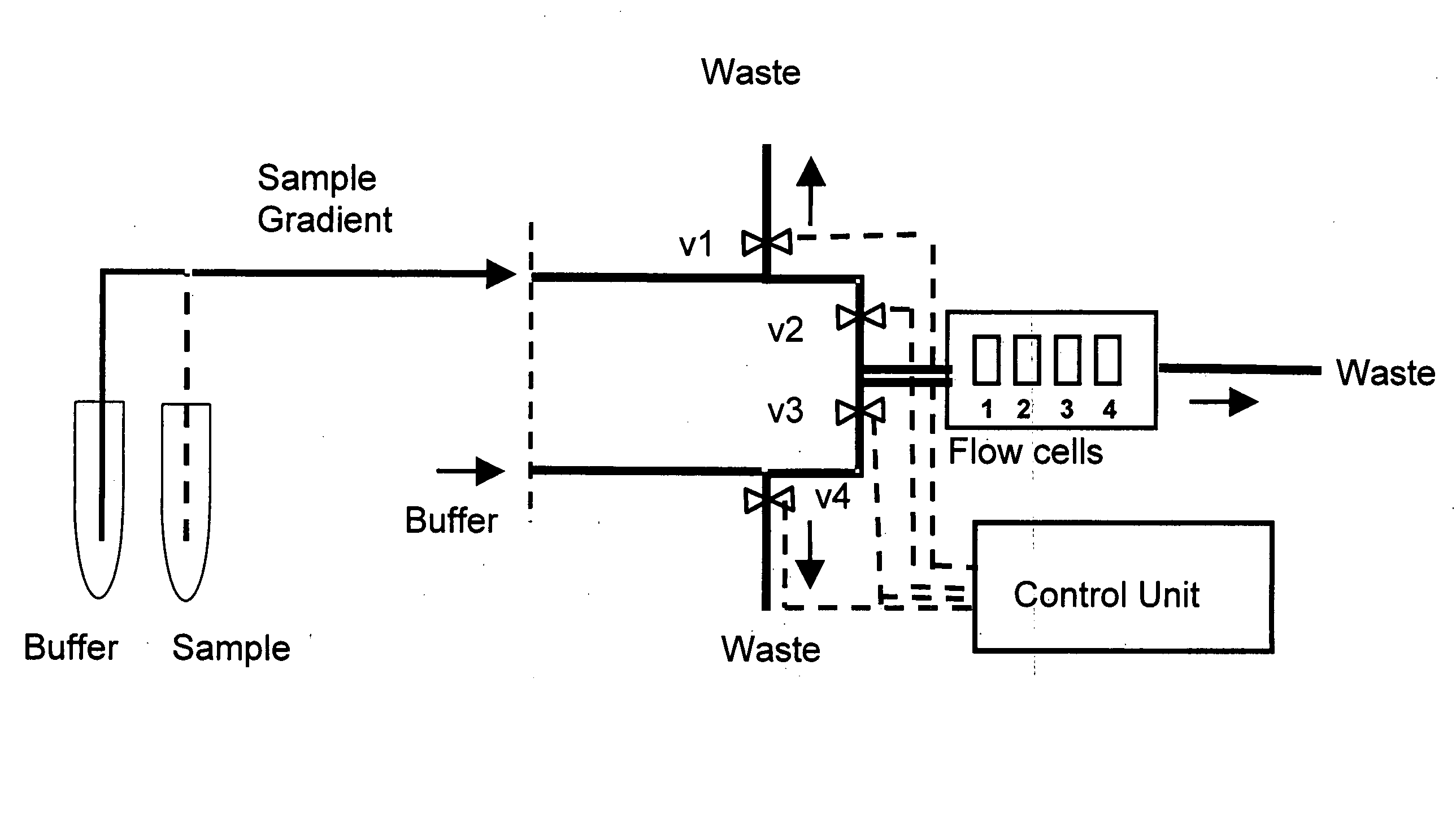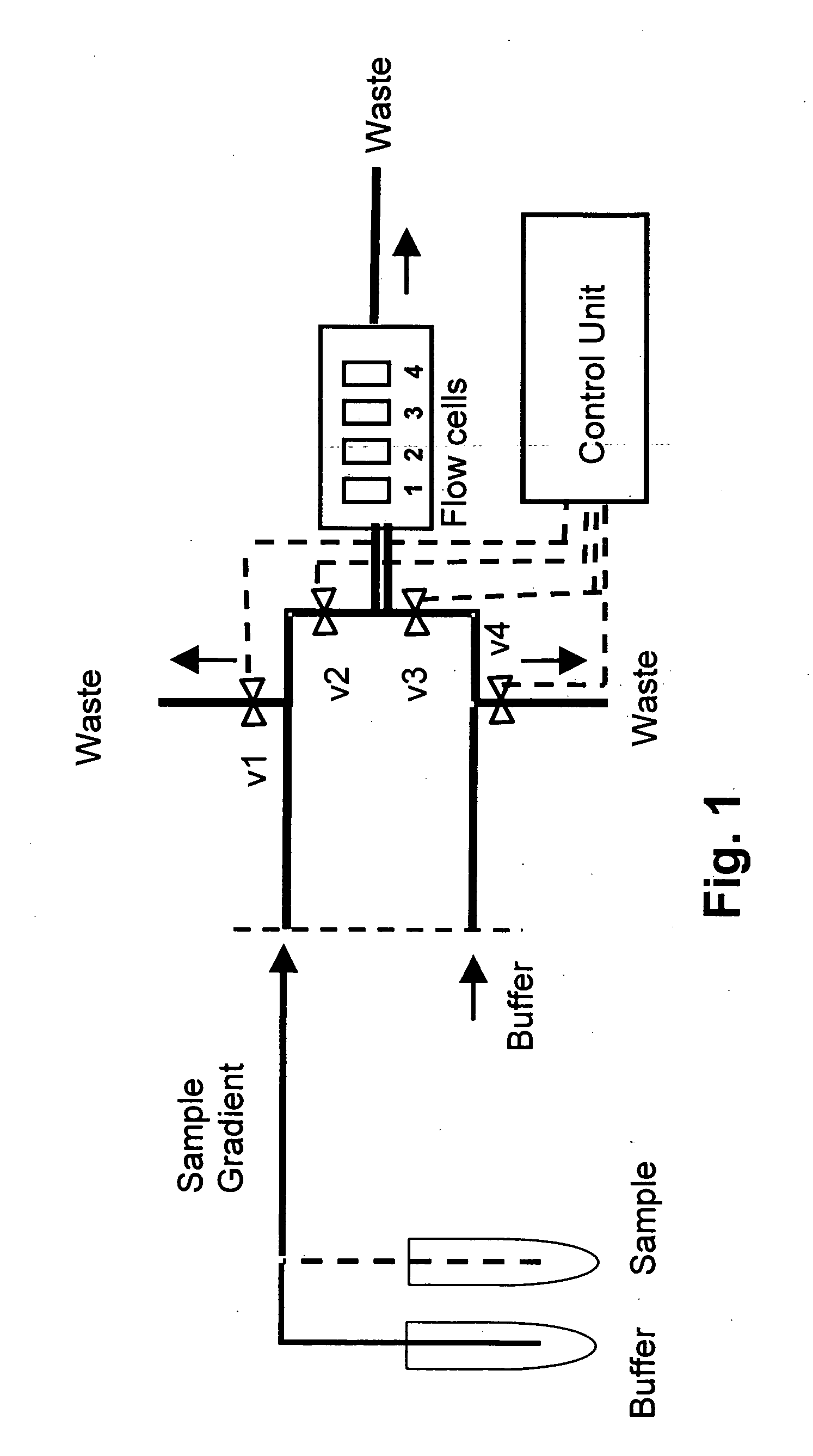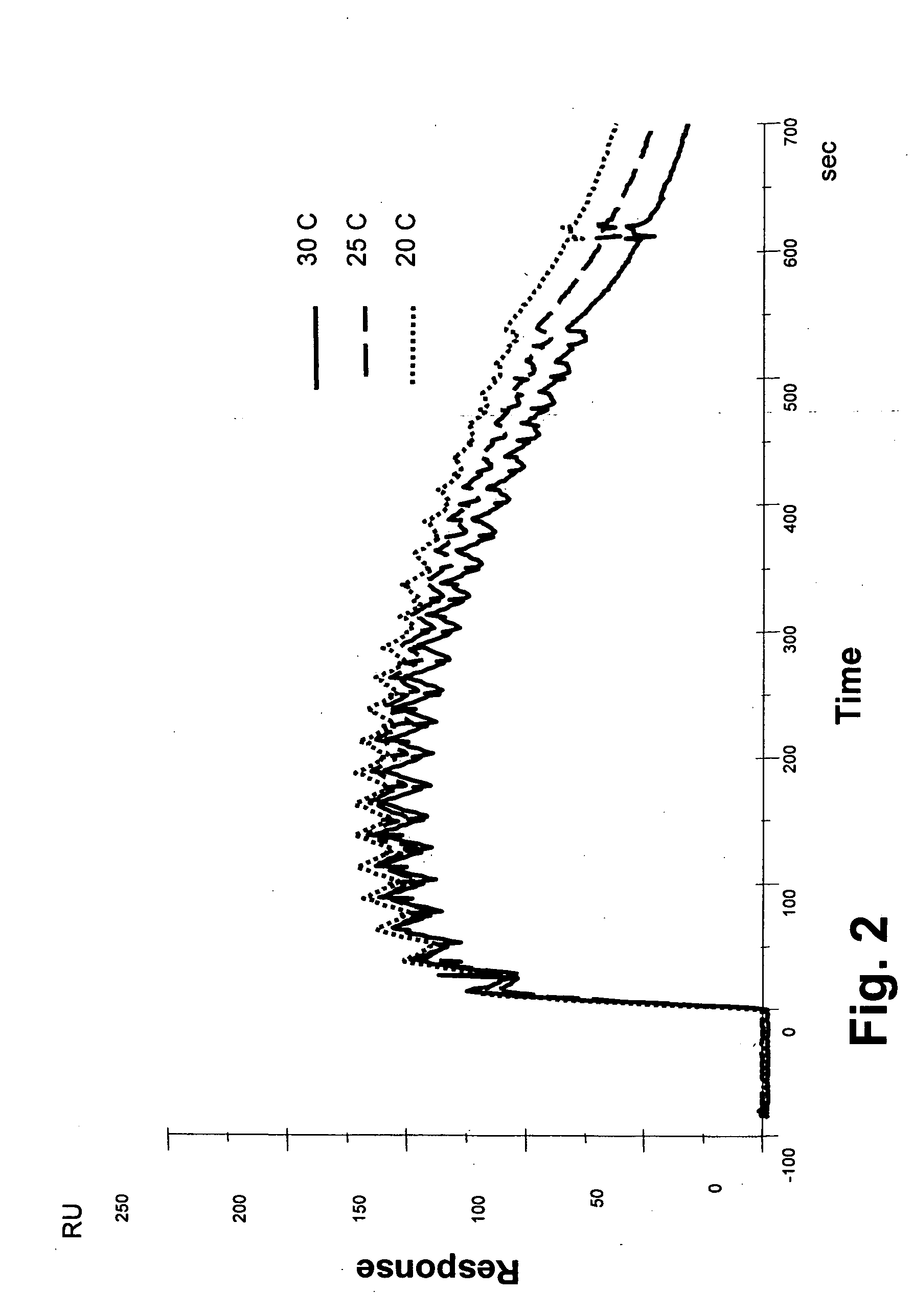Method and apparatus for characterization of interactions
- Summary
- Abstract
- Description
- Claims
- Application Information
AI Technical Summary
Benefits of technology
Problems solved by technology
Method used
Image
Examples
example 1
Slow Kinetic Interaction
A monoclonal anti-myoglobin antibody was immobilized to a level of approximately 2070 and 930.RU (flowcells 2 and 4, respectively in FIG. 1) by a standard amine coupling procedure at 20° C. Following a 7-min. activation with EDC-NHS, anti-myoglobin (10 μg / ml in 10 mM sodium acetate, pH 5.0) was injected over the surface for 5 min. Unreacted esters were then deactivated by a 7-min. injection of 1 M ethanolamine, pH 8.5. Channels 1 and 3 were used as reference cells, and were activated and deactivated as above. The flow rate was 5 μl / min.
Myoglobin, 20 μg / ml (initial concentration 110 nM in running buffer), was injected over all flowcells simultaneously at 20, 25 and 30° C., using the pulse injection method. The signals in flowcells 1 and 3 were subtracted from those of flowcells 2 and 4, respectively, to correct for bulk errors. Each injection was followed by two 30-sec. pulses of regeneration solution (10 mM glycine pH 3, 1 mM NaCl, 10% ethanol). The injec...
example 2
Estimation of Interaction Rate Constants
The kinetics of the triple mutant of the camel antibody (SGS) binding to lysozyme was studied with the pulse injection method according to the invention. All experiments were performed at 30° C. 190 RU (chip 1) and 280 RU (chip 2) of lysozyme was immobilized using the amine coupling procedure described in Example 1. Upon a 2-min. activation, lysozyme (8 μg / ml in 10 mM Na2HPO4, pH 7.0) was injected for 3 min. (chip 1) and 4 min. 30 sec. (chip 2). 10 mM Na2HPO4, pH 7.0 (flow rate 5 μl / min) was used as running buffer during immobilization. SGS was injected at different initial concentrations (0.5, 1.0 and 2.0 μM in HBS-EP). Results are shown in FIG. 3.
Bulk errors in the sample solutions were corrected for by subtraction of the reference flow cell signals. Individual pulses were separated and aligned, using MATLAB, so that each pulse corresponded to one binding curve. The curves were superimposed in the BIAevaluation software. 15 pulses were u...
example 3
Estimation of Affinity
Approximately 15000 RU of anti-maltose antibody was immobilized in one of the four flowcells. Roughly the same amount of another antibody, anti-AFP, was immobilized in a reference flowcell in order to minimise errors in reference subtraction due to the high immobilization level. These two proteins were immobilized using the “amine coupling” procedure as follows: HBS-EP was used as running buffer with a constant flow rate of 5 μl / min. After activation for 12 min. with EDC, target (anti-maltose or anti-AFP, 50 μg / ml in 10 mM sodium acetate, pH 5.0) was injected for 7 min., followed by a 12-min. deactivation. Immobilization and all measurements on the surface were performed at 25° C.
Samples of different initial concentrations (0.05 and 0.1 mM) were injected over the surface. The association and dissociation phases of each pulse were 12 seconds. This was sufficient to reach an equilibrium level and to allow the complexes to completely dissociate. Each experimen...
PUM
 Login to View More
Login to View More Abstract
Description
Claims
Application Information
 Login to View More
Login to View More - R&D
- Intellectual Property
- Life Sciences
- Materials
- Tech Scout
- Unparalleled Data Quality
- Higher Quality Content
- 60% Fewer Hallucinations
Browse by: Latest US Patents, China's latest patents, Technical Efficacy Thesaurus, Application Domain, Technology Topic, Popular Technical Reports.
© 2025 PatSnap. All rights reserved.Legal|Privacy policy|Modern Slavery Act Transparency Statement|Sitemap|About US| Contact US: help@patsnap.com



